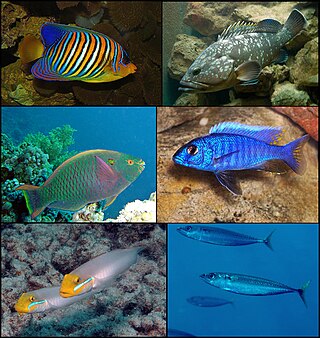
Perciformes, also called the Percomorpha or Acanthopteri, is an order or superorder of ray-finned fish. If considered a single order, they are the most numerous order of vertebrates, containing about 41% of all bony fish. Perciformes means "perch-like". Perciformes is an order within the Clade Percomorpha consisting of "perch-like" Percomorphans. This group comprises over 10,000 species found in almost all aquatic ecosystems.

The Scorpaeniformes are a diverse order of ray-finned fish, including the lionfishes and sculpins, but have also been called the Scleroparei. It is one of the five largest orders of bony fishes by number of species, with over 1,320.
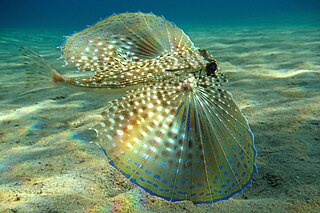
The flying gurnards are a family, Dactylopteridae, of marine fish notable for their greatly enlarged pectoral fins. As they cannot literally fly or glide in the air, an alternative name preferred by some authors is helmet gurnards. They have been regarded as the only family in the suborder Dactylopteroidei of the Scorpaeniformes but more recent molecular classifications put them in the order Syngnathiformes, in the superfamily Centriscoidea.

The Osmeriformes are an order of ray-finned fish that includes the true or freshwater smelts and allies, such as the galaxiids and noodlefishes; they are also collectively called osmeriforms. They belong to the teleost superorder Protacanthopterygii, which also includes pike and salmon, among others. The order's name means "smelt-shaped", from Osmerus + the standard fish order suffix "-formes". It ultimately derives from Ancient Greek osmé + Latin forma, the former in reference to the characteristic aroma of the flesh of Osmerus.

Gasterosteoidei is a suborder of ray-finned fishes that includes the sticklebacks and relatives, the 5th edition of Fishes of the World classifies this suborder within the order Scorpaeniformes.

Scorpaenoidei is a suborder of ray-finned fishes, part of the order Scorpaeniformes, that includes the scorpionfishes, lionfishes and velvetfishes. This suborder is at its most diverse in the Pacific and Indian Oceans but is also found in the Atlantic Ocean.

Hexagrammidae, the greenlings, is a family of marine ray-finned fishes belonging to the suborder Cottoidei in the order Scorpaeniformes. These fishes are found in the North Pacific Ocean.
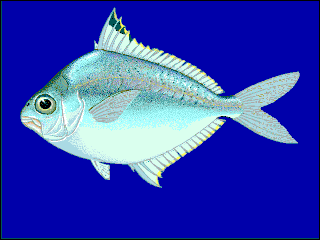
Leiognathidae, the ponyfishes, slipmouths or slimys / slimies, are a small family of fishes in the order Perciformes. They inhabit marine and brackish waters in the Indian and West Pacific Oceans. They can be used in the preparation of bagoong.
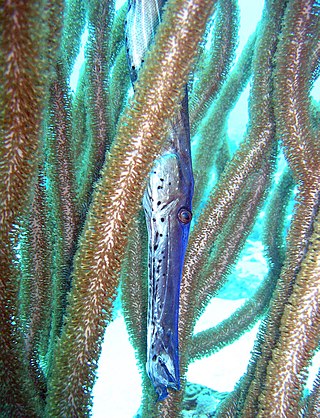
The Syngnathiformes are an order of ray-finned fishes that includes the sea moths, trumpetfishes and seahorses.
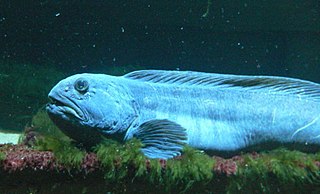
Zoarcoidei is a suborder of marine ray-finned fishes belonging to the order Scorpaeniformes. The suborder includes the wolffishes, gunnels and eelpouts. The suborder includes about 400 species. These fishes predominantly found in the boreal seas of the northern hemisphere but they have colonised the southern hemisphere.

Macroramphosidae, the snipefishes and bellowsfishes is a family of oviparous, marine fish which form part of the superfamily Centriscoidea, which is one of the two superfamilies in the suborder Aulostomoidei of the order Syngnathiformes, which includes the seahorses, pipefishes, trumpetfishes and dragonets. It has been considered to be a subfamily of the Centriscidae but Nelson (2016) classified it as a family.

The Argentiniformes is an order of marine ray-finned fish whose distinctness was recognized only fairly recently. In former times, they were included in the Osmeriformes as suborder Argentinoidei. That term refers only to the suborder of marine smelts and barreleyes in the classification used here, with the slickheads and allies being the Alepocephaloidei. These suborders were treated as superfamilies Argentinoidea and Alepocephaloidea, respectively, when the present group was still included in the Osmeriformes.

Errantia is a diverse group of marine polychaete worms in the phylum Annelida. Traditionally a subclass of the paraphyletic class Polychaeta, it is currently regarded as a monophyletic group within the larger Pleistoannelida, composed of Errantia and Sedentaria. These worms are found worldwide in marine environments and brackish water.

Cottoidei is a suborder of ray-finned fishes which, according to the 5th edition of Fishes of the World, is placed within the order Scorpaeniformes, alongside the scorpionfishes, flatheads, eelpouts, sticklebacks and related fishes.

Scombriformes is an order of bony fish containing nine families which were classified under the suborders Scombroidei and Stromateoidei, of the wider grouping known as Perciformes, Fishes of the World, 5th ed. (2016), recognised the order but subsequent workers have suggested that Scombriformes forms part of the larger Pelagiaria clade.

Aulostomoidei is a superfamily of the order Syngnathiformes, which also contains groups such as the seahorses, pipefishes and dragonets. It is one of two superfamilies which make up the suborder Aulostomoidei within the Syngnathiformes.

Centriscoidea is a superfamily of the suborder Aulostomoidei, part of the order which includes the sea horses, pipefishes and dragonets, the Syngnathiformes. They are characterised by having the 5-6 anterior vertebrae being elongated and the pelvic fin has a single spine and four rays.

Ovalentaria is a clade of ray-finned fishes within the Percomorpha, referred to as a subseries. It is made up of a group of fish families which are referred to in Fishes of the World's fifth edition as incertae sedis, as well as the orders Mugiliformes, Cichliformes, and Blenniiformes. It was named by W. L. Smith and T. J. Near in Wainwright et al. (2012) based on a molecular phylogeny, but the authors suggested that the group was united by the presence of demersal eggs that are attached to a substrate. Some authors have used the ordinal name Stiassnyiformes for a clade including Mugiloidei, Plesiopidae, Blenniiformes, Atherinomorpha, and Cichlidae, and this grouping does appear to be monophyletic.

Acanthuriformes is an order of ray-finned fishes, part of the Percomorpha clade. Some authorities place the fishes in the order within the Acanthuriformes in the suborders Acanthuroidea and Percoidea of the order Perciformes.

Siganoidea is a superfamily belonging to the suborder Percoidei which in turn is the largest suborder of the order Perciformes. It contains two families of largely Indo-Pacific distribution.





















